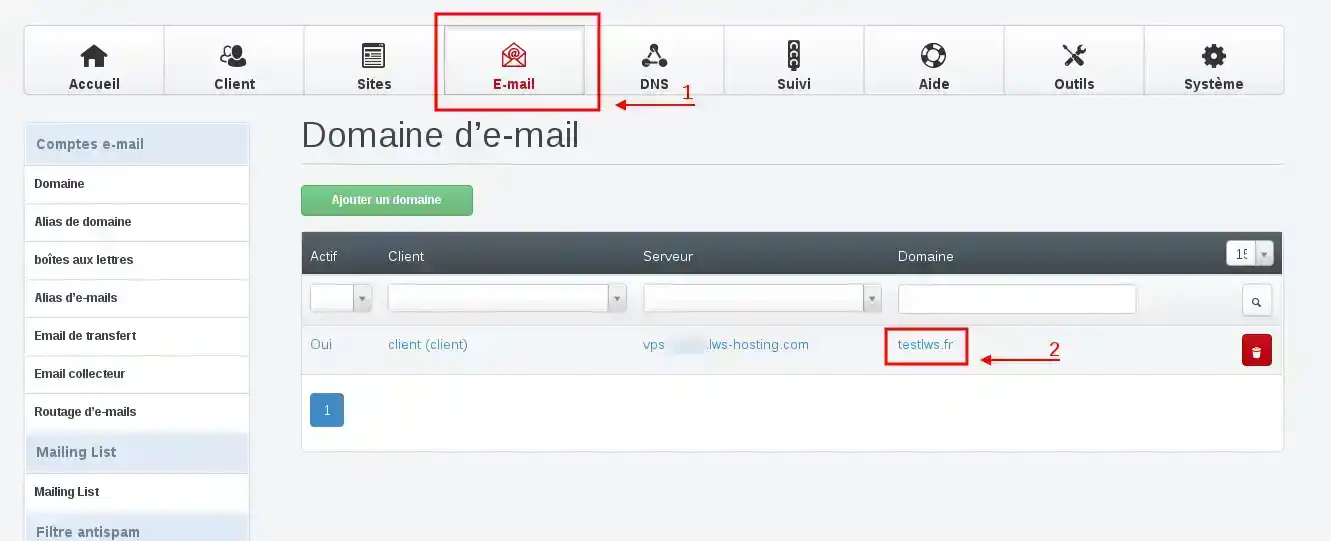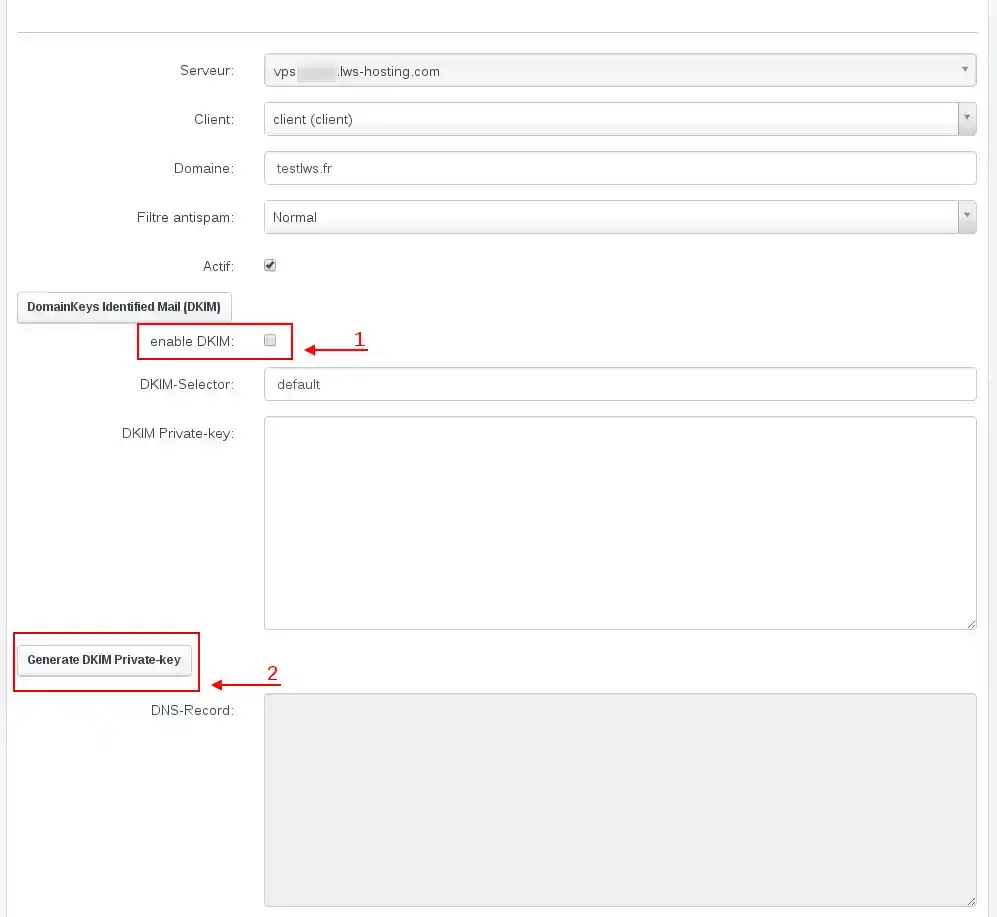Rate this article :
4.2/5 | 5 opinion
This article was useful to you ?
Yes
No
Vous avez noté 0 étoile(s)
Sommaire
Procédure
A DKIM key, or DomainKeys Identified Mail, is a method of validating the authenticity of emails sent from a specific domain. When you use DKIM, a pair of cryptographic keys is generated: a private key and a public key. The private key is used to digitally sign outgoing emails, while the public key is published in your domain's DNS records.
When a mail server receives a DKIM-signed email, it can verify the authenticity of the signature using the public key of the sending domain. If the signature is valid, this indicates that the email has not been altered in transit and that it comes from the specified domain.
The main purpose of DKIM is to reduce the risk of email spoofing and to guarantee that emails sent from your domain are legitimate. This increases recipient confidence and helps combat phishing and spam.
By activating DKIM, you strengthen the security of your outgoing emails and help maintain a good reputation for your domain.
1. Connect to the ISPCONFIG control panel associated with your VPS
2. Go to the "E-mails" section and click on the domain on which you wish to perform this operation

3. To start generating this key, click on the"DomainKeys Identified Mail (DKIM)" button.

4. Tick the"enable DKIM" field then click on the"Generate DKIM Private-Key" button to generate it.

Clicking on the "Generate DKIM Private-key" button will automatically fill in the"DKIM Private-Key" and"DNS-Records" fields.
To confirm the creation of this DKIM key, click on the green "Save" button.
Rate this article :
4.2/5 | 5 opinion
This article was useful to you ?
Yes
No
1mn reading
How do I create an email address on a dedicated VPS server?
5mn reading
Optimise the way you send your emails
0mn reading
How to change the VPS/ISPCONFIG email password
1mn reading
How can I block particular extension emails on ISP Config?
Bonjour,
Je vous remercie pour votre message.
Le nom et la valeur d'un enregistrement DKIM ne comporte aucun guillemet. Si l'enregistrement fourni comporte des guillemets, ceux-ci sont à supprimer avant de valider l'ajout de cet enregistrement.
Cordialement, L'équipe LWS